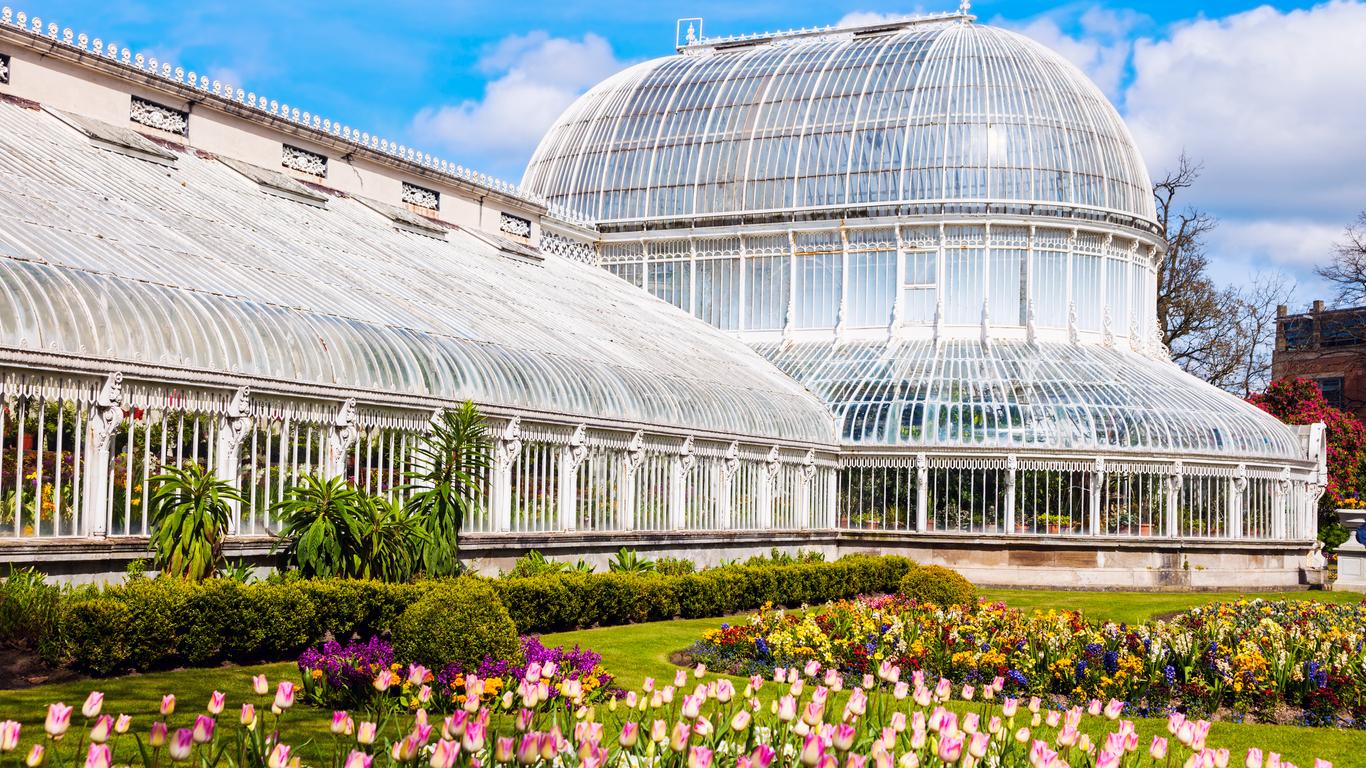Spread across eleven hectares on Stranmillis Road in Belfast’s Queen’s Quarter are the city’s Botanic Gardens. In addition to their magnificent collection of local and exotic plant species, the gardens are home to some iconic pieces of botanical architecture.
The Botanic Garden’s most recognisable structure is the Palm House conservatory which was built in 1939. It stands as one of the world’s earliest curvilinear, cast iron glasshouses, with its innovative design allowing Victorian horticulturalists to grow exotic plants. It was built by acclaimed botanic architect Richard Turner who went on to design the glasshouses at Kew in London and the Irish National Botanic Gardens in Glasnevin. The Palm House features a 400-year-old Xanthorrhoea from Australia among its tropical plants, hanging baskets and birds of paradise. Another glasshouse at the Botanic Gardens, the Tropical Ravine House, first opened in 1889, and its sunken ravine is filled with tree ferns, bananas, orchids and flowering vines which can be viewed from balconies on either side. It features some of the oldest seed plants in existence today and exhibits an impressive African dombeya which flowers once a year in February. The Botanic Gardens also feature the Rose and Alpine Gardens, one of the longest herbaceous borders in the United Kingdom and Ireland, and some impressive mature trees that include the hornbeam oak. At the Stranmillis Road entrance stands a statue of the Belfast-born mathematical physicist and engineer, Lord Kelvin, as well as the Ulster Museum which is the largest museum in Northern Ireland. It has an extensive collection of art, natural history, archaeological, geological and botanical displays, together with treasures from the Spanish Armada.
The Botanic Gardens in Belfast are located to the south of the city centre and within walking distance of the Botanic Railway Station. They can also easily be accessed by public bus services, with stops at nearby Queen’s University and College Park.
The gardens were established in 1828 as the Royal Belfast Botanical Gardens, initially as a private park that only opened to the public on Sundays. In 1895 the Belfast Corporation, later the Belfast City Council, bought the gardens and it became a public park for all to enjoy throughout the week.





